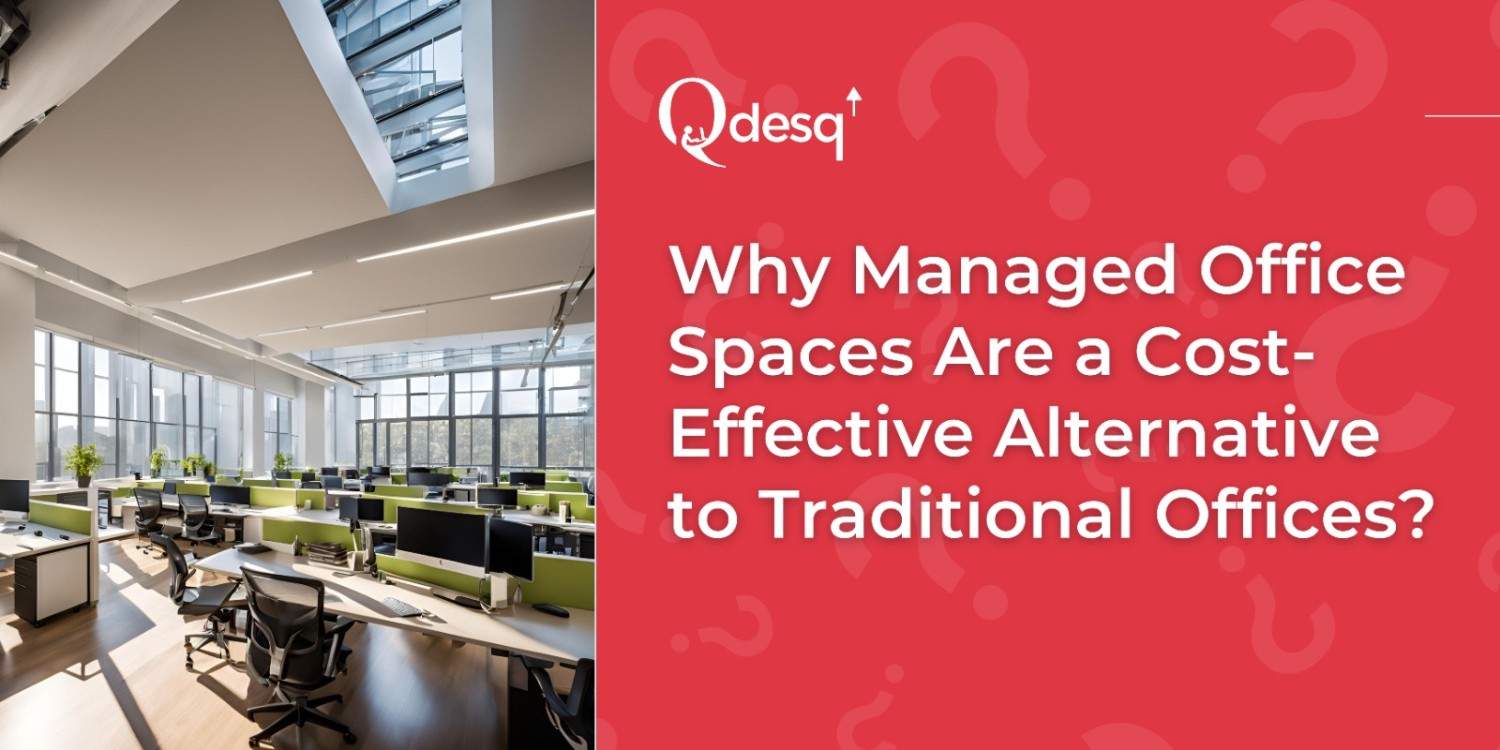Setting up a traditional office has long been a costly, rigid process that demands long-term leases, heavy upfront investment, and endless maintenance headaches. But in a world where agility and cost-efficiency define success, businesses ask a better question: Is there a smarter way to work?
Enter managed office spaces—a flexible, scalable, and cost-effective solution gaining traction among businesses worldwide. According to Business Research Insights, the managed office market hit $34.76 billion in 2023 and is expected to reach $129.71 billion by 2032, growing at a compound annual growth rate (CAGR) of 15.77%.
So, why are so many businesses making the switch? Let’s explore the reasons why managed office spaces are not only more affordable but also offer significant business advantages.
What Are Managed Office Spaces?
Managed office spaces are flexible workspaces that offer businesses the ability to rent office space with various services included. These offices come fully equipped with everything you need to operate, from furniture and high-speed internet to receptionist services and meeting rooms. Essentially, the workspace is “managed” by a third-party provider, allowing businesses to focus on their core operations while avoiding the burdens of managing office logistics.
Key Features of Managed Office Spaces
- Fully furnished offices and workstations
- High-speed internet and telecom services
- Meeting rooms, event spaces, and shared workspaces
- Access to communal areas like kitchens and lounges
- On-site administrative support
- Flexible lease terms and scalable space options
Cost Comparison: Managed Office Spaces vs. Traditional Offices
When it comes to cost, managed office spaces offer significant savings compared to traditional offices. Let’s break down the costs to understand why.
Upfront Costs: Lease, Utilities, Maintenance, and More
In a traditional office, you must sign a long-term lease (often 3-5 years), which can come with hefty upfront costs, including security deposits, broker fees, and customizing the office space. In addition, businesses are responsible for utilities, maintenance, insurance, and repairs.
On the other hand, managed office spaces offer a “pay-as-you-go” model, where all these costs are typically bundled into a single monthly fee. There’s no need for long-term commitments, and businesses avoid paying for the utilities, maintenance, or other overheads typically associated with managing an office.
Ongoing Expenses: Staff, Technology, and Equipment
Traditional offices require hiring administrative staff, purchasing equipment like printers, computers, and office furniture, and managing the IT infrastructure. These ongoing expenses can quickly add up.
Managed office spaces; however, provided all necessary equipment, tech support, and administrative services as part of the package. This significantly reduces overhead costs and the need for in-house staff to manage these areas.
Flexibility in Pricing and Lease Terms
Another significant advantage of managed office spaces is their flexibility in lease terms. Businesses can rent space on a short-term basis—sometimes as little as a month—allowing them to scale up or down based on their needs.
Traditional office leases, in contrast, are usually long-term commitments that may tie businesses into unfavourable terms.
Reduced Overhead and Hidden Costs
Managed office spaces reduce visible expenses and cut down on hidden costs that many businesses fail to account for in traditional offices.
Maintenance and Operational Expenses
In a traditional office, the costs for maintaining the building, handling repairs, and cleaning services all fall on the tenant. With managed offices, these responsibilities are handled by the service provider, eliminating the need for businesses to hire additional staff or manage these tasks themselves.
Technology Infrastructure and Support
Technology plays a crucial role in modern offices, but it’s also a costly investment. Managed office spaces come equipped with advanced IT infrastructure, including high-speed internet, secure networks, and tech support, all included in the rental price. This allows businesses to leverage cutting-edge technology without making a significant upfront investment.
Staff and Resources Required for Office Management
Office management requires staff to handle everything from scheduling meeting rooms to maintaining office supplies. Managed office spaces take care of these tasks, leaving businesses to focus on what they do best. The shared administrative staff and services are already built into the cost of the space, offering savings on payroll and management resources.
Access to Premium Amenities at Lower Costs
Traditional offices often require significant investments in building and maintaining amenities like meeting rooms, lounges, and cafeterias. In contrast, managed office spaces provide access to these premium features without the hefty price tag.
High-Quality Infrastructure, Furniture, and Design
Managed offices are typically equipped with stylish, modern furniture and high-end finishes, offering a professional look that businesses may not be able to afford in traditional office spaces. The infrastructure is designed to be efficient, helping businesses run smoothly
Shared Services: Reception, IT Support, and Meeting Rooms
Managed office spaces provide shared services like receptionists, administrative support, meeting rooms, and IT support. These services are often unavailable or incur extra costs in traditional office setups. Access to these services allows businesses to project a professional image without the additional cost of hiring staff or purchasing equipment.
Conclusion
Managed office spaces are more than just a trend; they are a strategic financial decision for businesses looking to optimize costs, enhance flexibility, and improve operational efficiency. They offer a cost-effective alternative to traditional offices with no long-term commitments, lower overheads, and access to premium amenities.
For companies aiming to stay agile in an ever-changing business landscape, managed offices provide the perfect blend of affordability and functionality. The future of work is flexible, and managed office spaces are leading the way.











